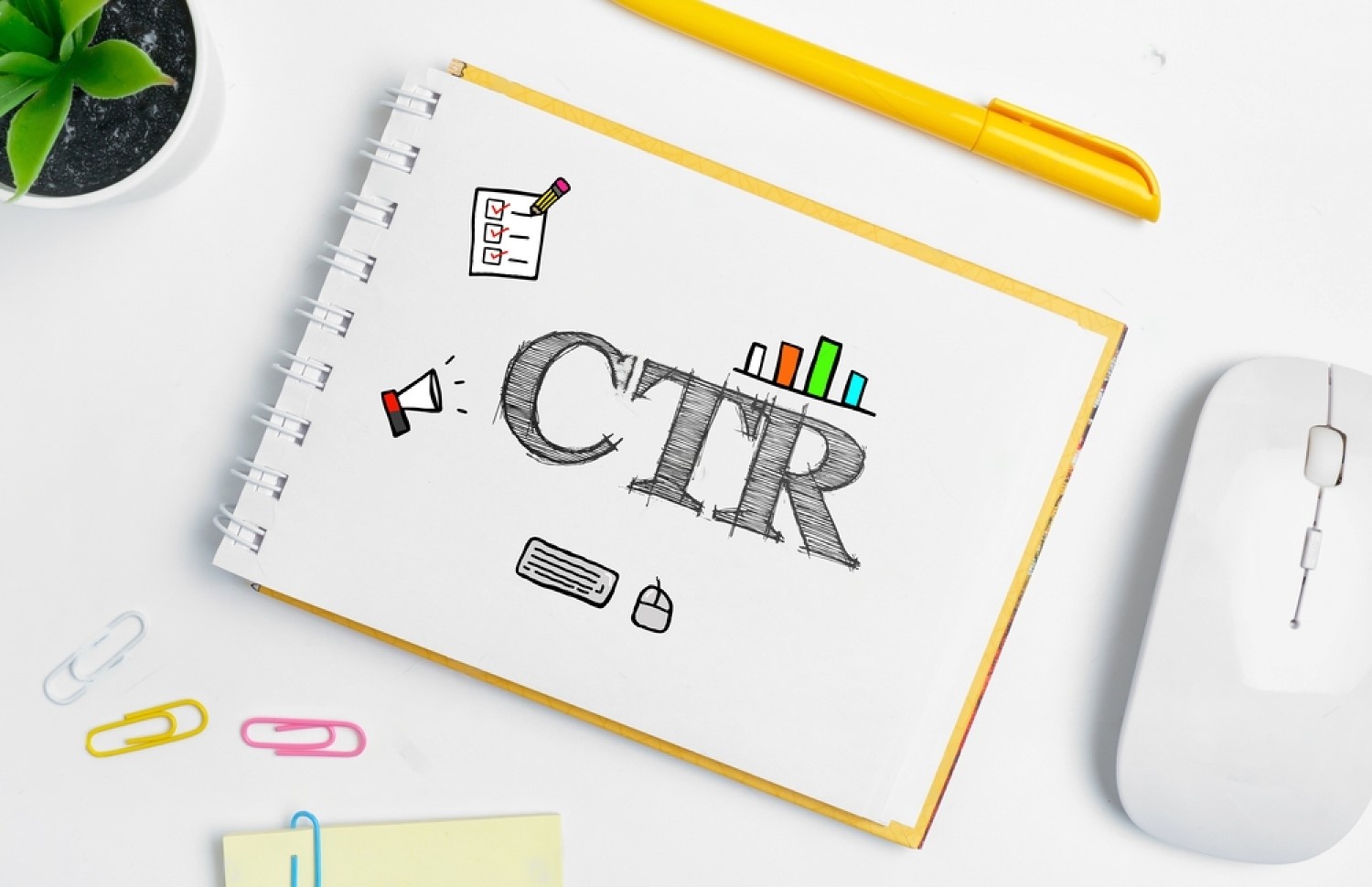CTR (Click-Through Rate): A Crucial Engagement Metric
In the fast-paced realm of digital marketing, comprehending the pivotal metrics is paramount. One such metric, Click-Through Rate (CTR), plays an indispensable role in assessing the success of your online campaigns. In this comprehensive guide, we’ll dive deep into the nuances of CTR. We’ll uncover what CTR encompasses, why it stands as a vital metric, and how you can enhance it to drive more effective digital endeavors.
What Is CTR?
Let’s embark on our journey by understanding the fundamental concept of Click-Through Rate (CTR). In the realm of digital marketing, CTR assumes an incredibly central position. At its core, CTR is a quantifiable metric that offers insights into the efficiency of your digital marketing initiatives. Whether you’re engaged in email marketing, pay-per-click (PPC) advertising, or social media campaigns, CTR provides a gauge for evaluating the percentage of individuals who have engaged with a specific call to action (CTA) or clicked on a link within a digital asset. This percentage is calculated concerning the total number of people exposed to the said digital asset.
CTR is emblematic of how compelling your content is, how well it resonates with your intended audience, and how adeptly it inspires action. It encapsulates the essence of the digital marketer’s art: enticing users to not only view the content but also take that decisive step forward, thus transcending mere impressions.
Why CTR Matters?
Now that we’ve grasped the essence of CTR, it’s time to fathom why this metric is integral to the digital marketing landscape. There are several persuasive reasons why CTR holds such a crucial spot:
– Barometer of Relevance: A high CTR invariably points to the relevance and appeal of your content to your target demographic. It signifies that your content addresses their requirements and intrigues their interests. It’s akin to hitting the bullseye in an ever-shifting digital landscape.
– Cost-Efficiency in PPC Advertising: For those wading in the waters of PPC advertising, a robust CTR translates into a more cost-effective campaign. Advertising platforms often exhibit a penchant for favoring ads with elevated CTR by lowering the cost per click (CPC). In other words, your budget goes further with a higher CTR.
– Engagement’s Pulse: When your CTR is robust, it serves as an index of the degree to which your audience is actively involved with your content. Be it clicking on a product link, subscribing to your newsletter, or downloading an e-book, a robust CTR signifies a responsive audience that willingly takes the actions you intend.
CTRs are multifaceted in their value, encapsulating not just the appeal of your content but also the efficiency of your campaigns. They can influence your ad costs, guide your content strategies, and determine whether your target audience is simply viewing your message or actively participating in it.
How to Calculate CTR?
To unravel the intricacies of CTR, we must first discern how to calculate this quintessential metric. The computation is as transparent as it is insightful. The formula is as follows:
CTR = (Total Clicks / Total Impressions) 100
The numerator encompasses the total clicks your content has garnered, while the denominator covers the total impressions, representing the number of times your content has been displayed. The quotient is multiplied by 100 to yield the CTR as a percentage.
This formula is the linchpin of evaluating the responsiveness of your digital marketing assets. By applying this formula consistently, you can gauge the engagement efficiency of your content and campaigns.
How to Improve Your CTR
Now that we’re well-versed in the significance of CTR and how to quantify it, let’s venture into the territory of enhancing your CTR for more efficacious digital marketing endeavors.
– Compelling Headlines: In the digital realm, headlines are akin to a magnetic force. They’re the initial point of contact with your audience. By crafting compelling, attention-grabbing headlines, you can set the stage for a soaring CTR. These headlines should pique curiosity, offer solutions, or promise insights, giving the audience a compelling reason to click.
– Actionable CTAs: The potency of a Call to Action (CTA) is unparalleled. To uplift your CTR, your CTAs should be succinct, direct, and imbued with action-oriented language. Replace generic phrases like “Learn More” with dynamic directives such as “Get Your Free E-book Now” or “Start Your 30-Day Trial.”
– A/B Testing: The allure of A/B testing lies in its ability to uncover the precise elements that resonate best with your audience. Experiment with various facets of your content, whether it’s images, color schemes, or CTA button placements. A/B testing can provide actionable insights into what stimulates audience engagement, offering opportunities for improvement.
– Mobile Optimization: As the majority of internet users are now mobile-centric, ensuring the mobile-friendliness of your content and websites, along with optimal page load speed, is imperative. Failing in these aspects can be detrimental to your CTR. A less-than-optimal mobile experience and slow page load speeds can dissuade users from clicking and exploring your content.
– Quality Content: A high CTR is an outcome of not just compelling headlines and CTA buttons but also quality content that fulfills the expectations set by the aforementioned elements. Your content should provide genuine value, answer pertinent questions, and deliver on the promises made in your headlines and CTAs.
Incorporating these strategies is akin to equipping your CTR with wings. It enables your content to soar, engaging your audience more effectively and driving them towards the desired actions.
Tools and Resources for CTR Analysis
1. Google Analytics:
- Features: Google Analytics offers a treasure trove of data related to website traffic and user behavior. It tracks CTR for various elements like ads, organic search results, and specific pages.
- Benefits: Through detailed reports, marketers can identify which pages or elements are generating high CTRs. Segmentation features allow analysis based on traffic sources, user demographics, and behavior, aiding in CTR optimization strategies.
- Data-Driven Insights: Insights into bounce rates, session duration, and conversion rates complement CTR data, offering a holistic view for making informed decisions.
2. Google Search Console:
- Features: It provides CTR data specific to search queries, keywords, and individual pages appearing in Google’s search results. It also offers insights into average position and impressions.
- Benefits: By analyzing CTR data alongside keyword performance, marketers can identify low CTR opportunities, and optimize meta titles, descriptions, and structured data to improve click-through rates.
3. SEMrush:
- Features: SEMrush offers a suite of tools for analyzing paid and organic search performance, including CTR metrics. It provides insights into competitor analysis, keyword tracking, and ad performance.
- Benefits: Marketers can identify high-performing keywords and ad campaigns, uncover competitor strategies, and refine their own campaigns for better CTR and overall performance.
4. Ahrefs:
- Features: Ahrefs offers insights into organic CTR, click potentials for specific keywords, backlink analysis, and competitor research.
- Benefits: Understanding how organic search results impact CTR helps marketers optimize content for higher click-through rates. It aids in analyzing competitors’ strategies and finding opportunities for improvement.
5. Facebook Ads Manager:
- Features: It provides detailed insights into ad performance on Facebook and Instagram, including CTR metrics, audience engagement, and variations in CTR across campaigns.
- Benefits: Marketers can analyze ad creatives, targeting options, and placements to optimize CTR. Performance data helps in refining ad strategies for better results.
How These Tools Aid in Data-Driven Decisions:
- Performance Analysis: By aggregating and visualizing CTR data, these tools facilitate comprehensive analysis of campaigns, keywords, and audience behavior.
- Identifying Trends: Historical CTR data helps in identifying patterns and trends, enabling marketers to make strategic decisions for optimization.
- Optimization Opportunities: Insights from these tools guide optimization efforts by pinpointing areas for improvement in ad copy, keywords, targeting, and landing pages.
- Competitive Analysis: Understanding competitor strategies aids in benchmarking and refining own strategies to boost CTR and campaign effectiveness.
Leveraging these tools empowers marketers with detailed insights and actionable data, allowing for continuous optimization and improvement in CTR across various digital marketing channels.
Measuring Success with CTR
As digital marketers, the path to success is paved with data-driven decisions. CTR serves as a dynamic metric that acts as your guiding light in this endeavor. Its consistent monitoring facilitates the collection of insights that can shape the direction of your digital campaigns. The data gleaned from CTR analytics is instrumental in making informed choices, propelling audience engagement, and optimizing conversions.
By paying heed to the CTR, you’re arming yourself with a compass that points toward effective marketing strategies. You can spot trends, identify strengths, and address weaknesses. Moreover, this metric can furnish the clarity and data you need to make profound improvements to your campaigns.
Wrap Up
In the fast-paced, ever-evolving world of digital marketing, Click-Through Rate (CTR) serves as a steadfast compass that guides your campaigns toward success. By grasping its significance, learning how to measure it, and applying strategies to improve it, you’ll unlock the key to engaging your audience more effectively, lowering costs, and achieving your digital marketing goals. CTR is not just a metric; it’s the pulse of digital engagement. Make it your ally in navigating the competitive digital landscape.







